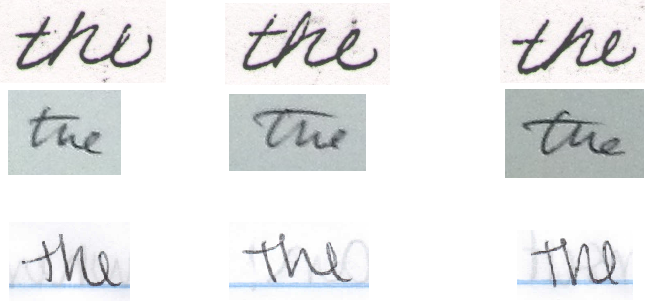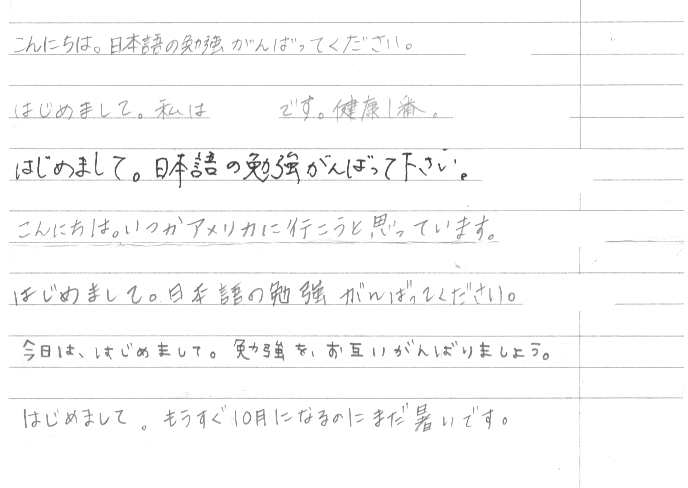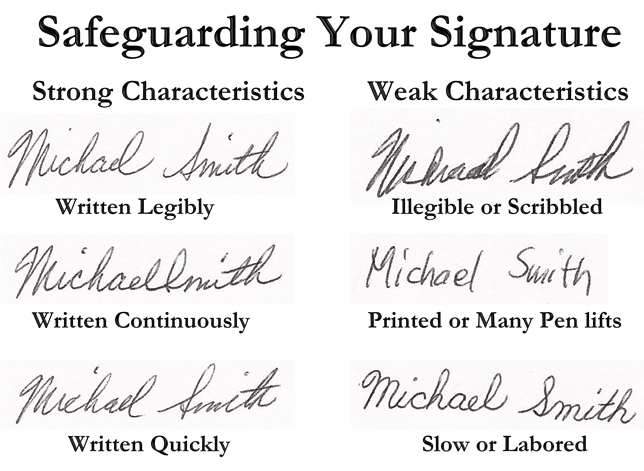About Handwriting Examination
Questioned Handwriting and Document Examination, also known as Forensic Document Examination, is the discipline of examining handwriting, signatures, and
documents in order to authenticate and verify authorship.
Handwriting examination is based on two basic principles;
1. No two people write exactly alike on any extended sample of writing.
2. No one can duplicate exactly anything they have written.
Handwriting examiners study and learn to recognize unique differences even in handwriting samples that initially appear to be the same. Using scientific
methods, microscopic examination, infrared and ultraviolet lighting, examiners can look deeper into handwriting than merely what you see on the page. This
allows examiners to come to more accurate conclusions regarding authorship and authenticity.
The image below shows the word "the" written multiple times by different writers. In school we learn to write using standardized models called "copybook". As we grow older, our handwriting matures and we introduce our own interpretations about what each character should look like. Each "the" has been constructed in a different way. These differences are what makes handwriting unique and identifiable. The samples demonstrate the two principles above: writers do not write alike, and each sample differs slightly from each other. The differences between each sample belonging to a common author are referred to as "range of variation" or "natural variation."

Handwriting Systems
Different languages and cultures have a variety of handwriting systems. Even with very structured writing systems, individuality still occurs and makes the writing unique. Below are several sentences written in Japanese by different authors. Japanese has a very structured writing system that insists upon specific stroke orders and formations. Despite this, each author still manages to find individuality with their writing. This individuality allows identification to be possible regardless of the writing system used.

How Do I Make My Signature More Secure?
Quite often you will hear the advice "make your signature illegible so it's harder to forge." Contrary to popular belief, this is one of the worst
things you can do to safeguard your signature. The harder a signature is to read, the easier it is for a potential forger to pass off their
simulation as genuine. Below is an illustration demonstrating both secure and weak signature characteristics.
The general rule is to make your signature more secure, it should be written as legibly as possible; legibility generally means more detail.
The more detailed the signature is, the more detail a potential forger will have to include.
Your
signature should be written as continuously as possible, meaning you should lift your pen from the page as few times as is feasible. Each time you
lift the pen from the page is another opportunity for a forger to stop, reset, take a break, make sure they are in the right place, and start again.
A continuous signature gives the fewest breaks for a potential forger to take advantage of.
Your signature should also be written as quickly as possible. The more slowly your signature is written, the easier
it is for a forger to simulate the line quality and speed.
Some flourishes and personalized features can also help to make your signature more unique. Above all, a consistent signature is the most secure.
The less variation your signature has from one time to the next, the more difficult your signature will be to copy, and the easier simulations will
be to detect and identify.

